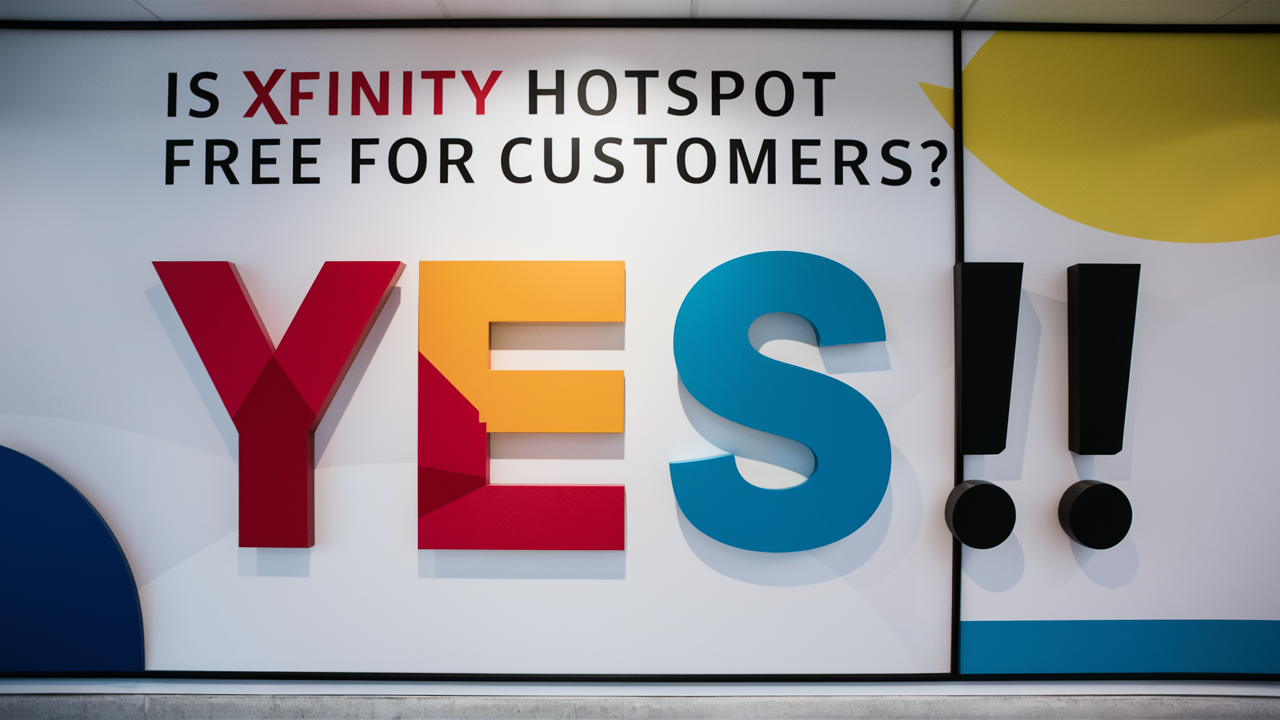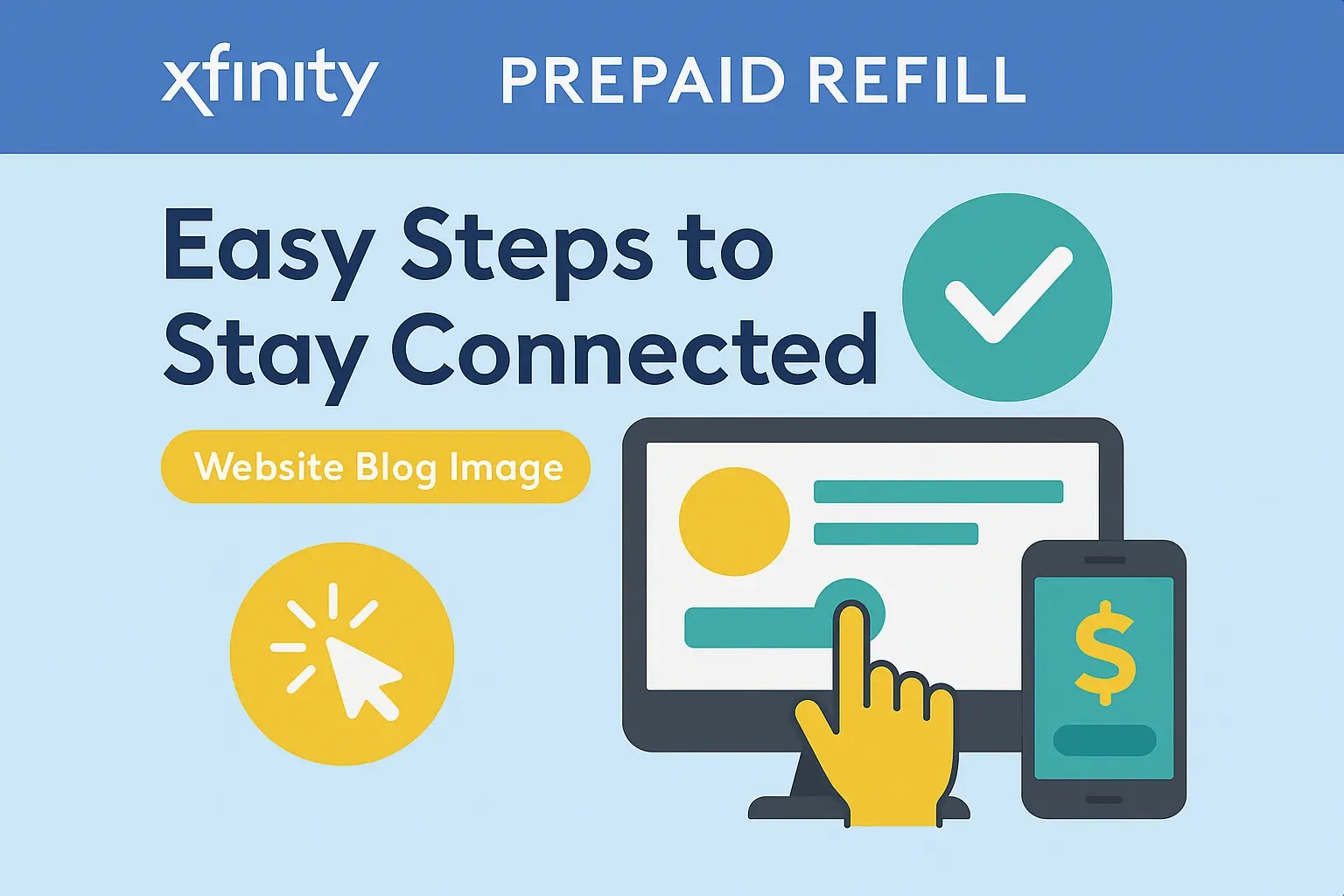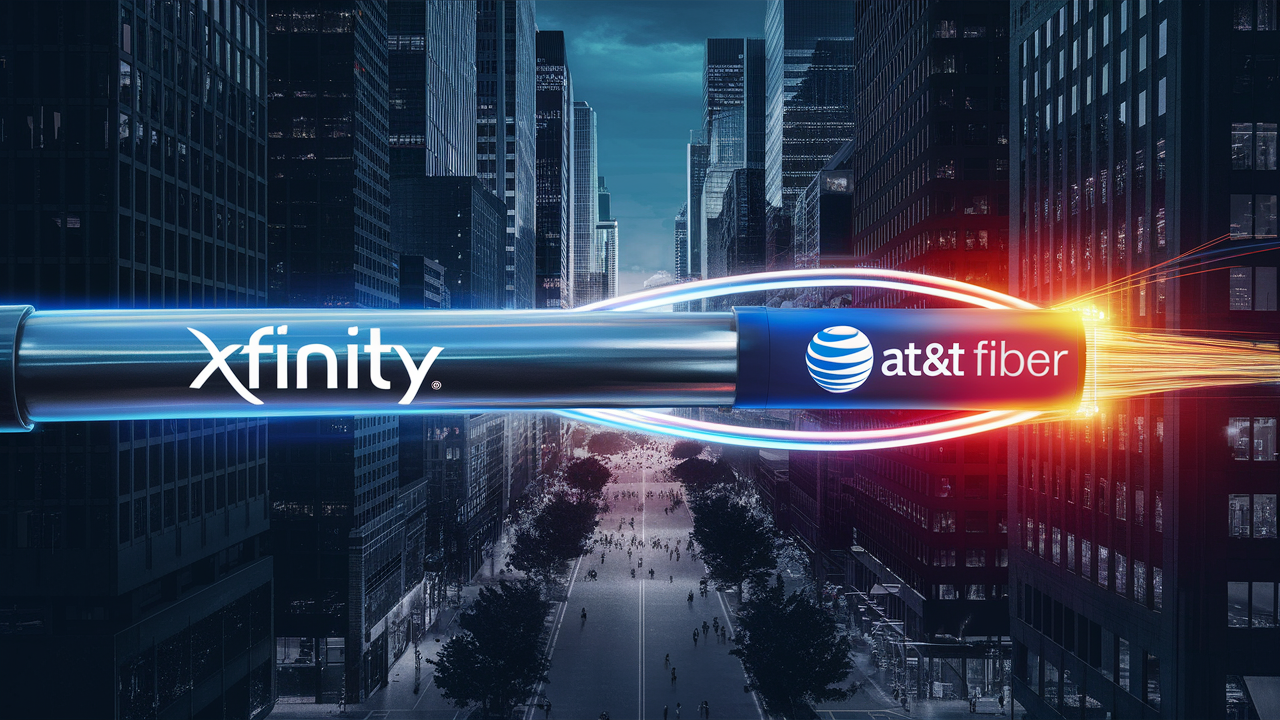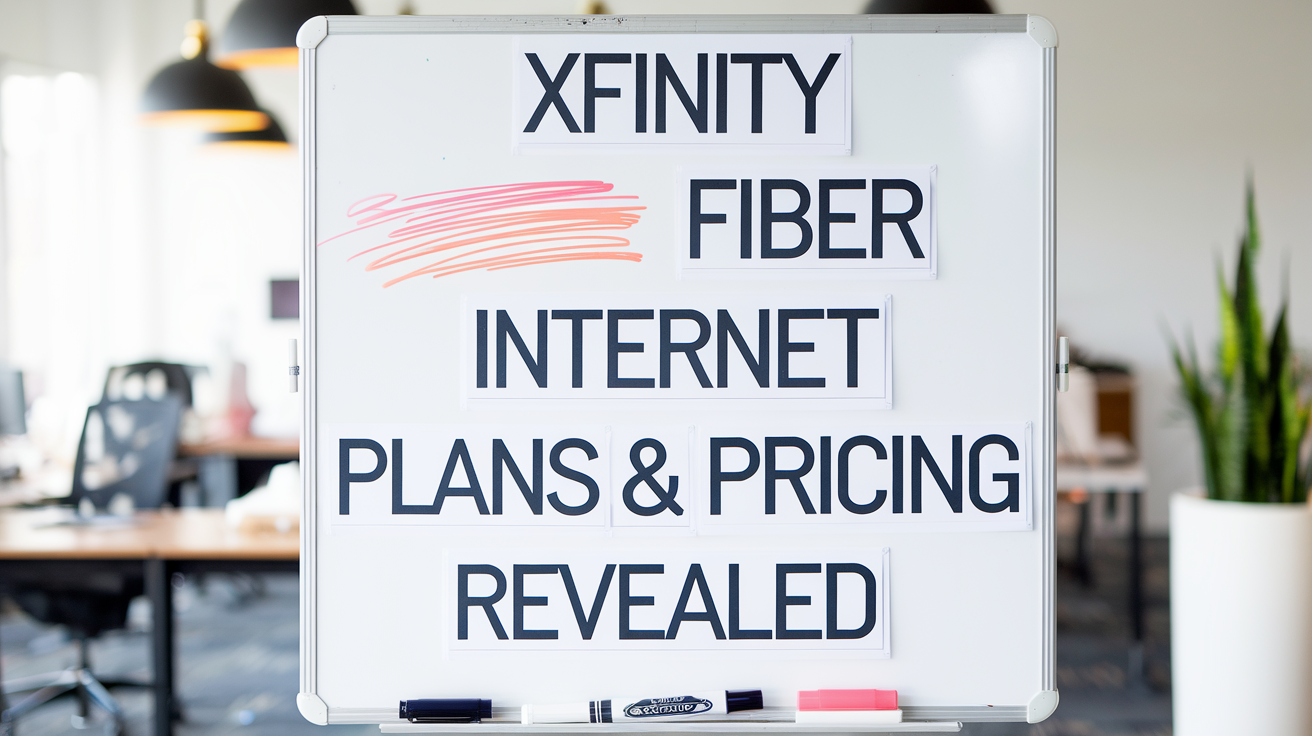Is Xfinity Hotspot Free For Customers?

Xfinity offers free Wi-Fi access to its internet customers through a vast network of public hotspots. This service allows subscribers to connect to the internet on the go, saving on mobile data usage. However, access and speed can vary, and it's crucial to understand the terms and limitations to maximize this benefit.
Understanding Xfinity's Free Hotspot Access for Customers
In the ever-connected landscape of 2025, reliable internet access is no longer a luxury but a necessity. For millions of Americans, Xfinity, a prominent internet service provider, offers not only home internet but also an extensive network of public Wi-Fi hotspots. A common question among Xfinity customers is whether these hotspots are truly free. The answer, in essence, is yes, but with important caveats that are crucial to understand. This article delves deep into the Xfinity hotspot program, clarifying what "free" entails, how to access it, its benefits, limitations, and best practices for a seamless experience. We will explore the technology behind these hotspots, their prevalence across the United States, and how they compare to other public Wi-Fi solutions available in 2025. By the end of this comprehensive guide, you'll have a clear picture of how to leverage Xfinity's Wi-Fi network to stay connected on the go, saving on your mobile data and ensuring productivity wherever you are.
The proliferation of smart devices, the increasing reliance on cloud-based applications, and the demand for constant connectivity have made public Wi-Fi a vital component of modern digital life. Xfinity's strategy to provide widespread public Wi-Fi access is a significant value-add for its subscribers, aiming to extend their home internet experience beyond the confines of their residences. This initiative is particularly beneficial for individuals who frequently travel, work remotely, or simply need to stay connected while out and about. The sheer scale of Xfinity's network, estimated to be one of the largest in the nation, means that finding a hotspot is often convenient, especially in urban and suburban areas. However, understanding the nuances of this service is key to avoiding frustration and maximizing its utility. This includes knowing how to authenticate, understanding potential speed variations, and being aware of the security implications inherent in using any public network.
How Xfinity Hotspots Work
Xfinity hotspots are essentially public Wi-Fi access points deployed by Comcast, the parent company of Xfinity. These hotspots are integrated into the infrastructure of existing Xfinity internet services. Many Xfinity home internet modems are dual-purpose devices: they broadcast a private Wi-Fi network for the subscriber's home use and simultaneously broadcast a separate, public Wi-Fi network. This public broadcast is what constitutes the Xfinity Wi-Fi hotspot network. The bandwidth for these public hotspots is typically a portion of the subscriber's home internet connection. This means that while you are using a public Xfinity hotspot, you are, in a sense, leveraging the infrastructure of another Xfinity customer's service. However, Comcast implements bandwidth management to ensure that the public hotspot usage does not significantly degrade the home internet experience for the host customer. This is a critical design element that allows the network to scale without overwhelming individual connections.
The Technology Behind the Network
The technology relies on a feature called "Public Wi-Fi" or "Hotspot" functionality built into many Xfinity-approved modems and routers. When enabled, these devices create a secondary, isolated Wi-Fi network. This network operates on a different SSID (Service Set Identifier) than the subscriber's private home network, usually something like "XfinityWiFi." This separation is vital for security and performance, ensuring that public users cannot access the private home network and that the public network's traffic is managed independently.
Network Distribution and Coverage
The Xfinity Wi-Fi network is one of the most extensive in the United States, with millions of hotspots available. These are strategically placed in various public locations, including:
- Commercial Establishments: Many businesses, such as coffee shops, restaurants, retail stores, and shopping malls, partner with Xfinity to host hotspots.
- Public Transportation Hubs: Airports, train stations, and bus terminals often feature Xfinity hotspots.
- Outdoor Areas: Parks, downtown areas, and other public spaces may also be covered.
- Residential Areas: Even within residential neighborhoods, the cumulative effect of numerous Xfinity modems broadcasting public Wi-Fi creates a dense network.
The density of these hotspots varies significantly by region, with higher concentrations in urban and suburban areas where Xfinity has a stronger customer base. In 2025, Comcast continues to expand this network, integrating new technologies and increasing the number of access points to meet growing demand for mobile connectivity.
The "Free" Aspect: What It Really Means in 2025
The term "free" in the context of Xfinity hotspots is a key selling point, but it's crucial to understand the conditions attached. Essentially, access to the Xfinity Wi-Fi network is a perk provided to Xfinity internet subscribers. If you have an active Xfinity internet plan at home, you are eligible to use these public hotspots without incurring additional charges beyond your existing internet bill. This means you can connect your mobile devices, laptops, and tablets to the "XfinityWiFi" network when you're away from home and avoid using your cellular data allowance.
Eligibility and Requirements
To access the hotspots for free, you must be an active Xfinity internet customer. This eligibility is tied to your account. When you connect to an Xfinity hotspot for the first time, you'll typically need to authenticate using your Xfinity username and password. Once authenticated, your device may be remembered, allowing for automatic connection on subsequent encounters with the same hotspot, or even other Xfinity hotspots. This seamless login process is a significant convenience. However, if your Xfinity internet service is suspended or disconnected, your access to the public hotspots will also be revoked.
Data Caps and Throttling in 2025
A significant consideration for 2025 is how data caps and potential throttling affect hotspot usage. While using Xfinity hotspots doesn't directly count against your home internet data cap, it's important to be aware of Xfinity's overall data policies. For most Xfinity internet plans, there's a data usage threshold (e.g., 1.2 TB per month). Exceeding this threshold can result in additional charges or reduced speeds. However, data consumed at Xfinity public hotspots generally does not count towards this home data cap. This is a major advantage, allowing users to stream, download, and browse extensively while on the go without worrying about their home data limit. Regarding throttling, speeds on public hotspots can vary. While not explicitly throttled in the same way a home connection might be during peak times, the shared nature of public Wi-Fi means speeds can be slower than your home connection, especially when many users are connected simultaneously. This is a common characteristic of all public Wi-Fi networks, not specific to Xfinity.
What About Non-Customers?
For individuals who are not Xfinity internet customers, accessing these hotspots is generally not free. While some locations might offer limited free access to the public network without authentication, this is rare and usually comes with severe speed restrictions or time limits. To gain full, unrestricted access to the Xfinity Wi-Fi network, a subscription to Xfinity internet service is required. Non-customers looking for public Wi-Fi options would need to rely on other providers or free Wi-Fi offered by businesses directly.
Locating and Connecting to Xfinity Hotspots
Finding an Xfinity hotspot is a straightforward process, thanks to the tools provided by Xfinity. The most reliable method is by using the official Xfinity WiFi Hotspots app or the interactive map available on the Xfinity website.
Using the Xfinity WiFi Hotspots App
The Xfinity WiFi Hotspots app, available for both iOS and Android devices in 2025, is an indispensable tool. It allows users to:
- View a Map of Nearby Hotspots: The app uses your device's location services to display a map highlighting all available Xfinity hotspots in your vicinity.
- Get Directions: Once you select a hotspot, you can often get directions to its exact location.
- Filter Hotspots: Some versions of the app may allow filtering based on location type (e.g., indoor/outdoor, specific business types).
- Connect Automatically: The app can help manage your connection settings, making it easier to connect to "XfinityWiFi" networks automatically when they are in range.
To use the app effectively, ensure you have downloaded it from your device's app store and logged in with your Xfinity account credentials. This ensures the app recognizes your eligibility for free access.
Connecting Manually
If you don't have the app or prefer to connect manually, follow these steps on your device:
- Enable Wi-Fi: Go to your device's settings and turn on Wi-Fi.
- Scan for Networks: Your device will scan for available Wi-Fi networks. Look for a network named "XfinityWiFi."
- Select the Network: Tap on "XfinityWiFi" to connect.
- Authenticate: A login portal or captive portal will likely appear. Enter your Xfinity username and password.
- Accept Terms (if prompted): You may need to agree to terms and conditions.
- Connect: Once authenticated, your device should connect to the internet.
For subsequent connections to the same hotspot, your device should ideally remember your credentials and connect automatically. If not, you may need to repeat the authentication process. Some devices might require you to manually select "XfinityWiFi" each time if automatic connection isn't configured correctly.
Troubleshooting Connection Issues
If you encounter problems connecting, try the following:
- Verify Credentials: Double-check your Xfinity username and password.
- Restart Device: Sometimes, a simple device restart can resolve temporary glitches.
- Forget Network: On your device, "forget" the XfinityWiFi network and try reconnecting from scratch.
- Check App/Map: Ensure the hotspot is still active and within range using the app or map.
- Contact Xfinity Support: If problems persist, Xfinity customer support can offer assistance.
Benefits and Limitations of Using Xfinity Hotspots
The Xfinity hotspot network offers a compelling value proposition for its customers, but like any service, it comes with its own set of advantages and disadvantages.
Key Benefits
- Cost Savings: The most significant benefit is the ability to save on cellular data usage. For users with limited mobile data plans, this can translate into substantial savings, especially in 2025 when data plans can be expensive.
- Extensive Network Coverage: With millions of hotspots nationwide, Xfinity provides a broad network that is often more extensive than what individual businesses or municipalities offer. This increases the likelihood of finding a connection when needed.
- Convenience and Accessibility: The ease of finding and connecting to hotspots via the app or automatic login makes it a convenient solution for staying connected on the go.
- No Impact on Home Data Caps: As mentioned earlier, data consumed at public hotspots generally does not count towards your home internet data cap, offering a sense of unlimited usage for mobile needs.
- Reliability (Generally): While speeds can vary, the network is generally reliable, powered by Comcast's robust infrastructure.
Notable Limitations
- Variable Speeds: The biggest limitation is the inconsistent speed. Hotspot performance depends on factors like the number of users connected, the bandwidth allocated by the host modem, and the distance from the access point. You might experience slow speeds during peak hours or in crowded areas.
- Security Risks: Public Wi-Fi networks, including Xfinity hotspots, are inherently less secure than private home networks. Data transmitted over these networks can be vulnerable to interception if not properly encrypted. (More on this in Section 7).
- Coverage Gaps: While extensive, the network is not ubiquitous. In rural areas or regions with lower Xfinity subscriber density, finding a hotspot can be challenging.
- Authentication Requirements: You must be an Xfinity internet customer to access the network freely. Non-customers cannot use this service without a subscription.
- Potential for Disconnections: In some instances, especially in high-traffic areas, connections might be less stable, leading to occasional disconnections.
Maximizing Your Xfinity Hotspot Experience
To get the most out of Xfinity's public Wi-Fi network, consider these practical tips and best practices:
Proactive Planning and Tools
- Download the App: Make sure you have the Xfinity WiFi Hotspots app installed and updated on all your devices. Regularly check it for new hotspot locations in areas you frequent.
- Save Credentials: Ensure your device is set to automatically connect to "XfinityWiFi" networks. This saves time and ensures you don't miss out on an available connection.
- Pre-download Content: If you anticipate needing internet access in an area with potentially spotty hotspot coverage, download movies, music, or important documents beforehand while on a stable connection.
Optimizing Connection and Usage
- Be Mindful of Location: When possible, try to get physically closer to the modem broadcasting the Wi-Fi signal. In public venues, the hotspot might be located near the entrance or counter.
- Limit Bandwidth-Intensive Activities During Peak Times: If you need to perform high-bandwidth tasks like video conferencing or large file uploads, try to do so during off-peak hours (e.g., early morning or late at night) when fewer people are likely to be connected.
- Use for Essential Tasks: For browsing, checking email, social media, and general web surfing, Xfinity hotspots are usually more than adequate. Reserve more demanding activities for your home or office network if possible.
- Monitor Connection Quality: Pay attention to your connection speed. If it's consistently slow, consider switching to your cellular data if it's more reliable for your current task, or simply wait until you have access to a better connection.
Leveraging Hotspots for Specific Needs
- Travel Companion: Use hotspots at airports, train stations, and hotels to stay connected during your journeys.
- Work on the Go: Connect at coffee shops or public libraries to catch up on work emails or access cloud documents.
- Emergency Connectivity: In situations where your home internet might be temporarily down, public hotspots can provide a crucial backup connection.
Security Considerations for Public Wi-Fi
Using any public Wi-Fi network, including Xfinity hotspots, carries inherent security risks. While Xfinity employs some security measures, users must remain vigilant to protect their personal information. In 2025, with the increasing sophistication of cyber threats, understanding these risks and taking precautions is more important than ever.
Potential Threats on Public Networks
- Man-in-the-Middle (MitM) Attacks: Attackers can position themselves between your device and the internet, intercepting or even altering your communications. This is particularly dangerous when transmitting sensitive information like login credentials or financial details.
- Unsecured Networks: While "XfinityWiFi" is a branded network, the underlying connection might not always be encrypted, especially if you're connecting to a modem that hasn't been configured with the latest security protocols.
- Malware Distribution: Hackers can set up fake Wi-Fi hotspots that mimic legitimate ones. Connecting to such a fake hotspot could lead to your device being infected with malware.
- Packet Sniffing: Attackers can use software to capture data packets transmitted over the network, potentially revealing sensitive information.
Essential Security Best Practices
To mitigate these risks when using Xfinity hotspots or any public Wi-Fi:
- Use a VPN (Virtual Private Network): A VPN encrypts all your internet traffic, creating a secure tunnel between your device and the VPN server. This makes it virtually impossible for anyone on the same network to intercept your data. For 2025, a reliable VPN is considered essential for public Wi-Fi users.
- Ensure Websites Use HTTPS: Look for "https://" at the beginning of website URLs and a padlock icon in your browser's address bar. This indicates that the connection to the website is encrypted. Avoid logging into sensitive accounts (banking, email) on sites that only use "http://".
- Disable Automatic Connection: While convenient, automatic connection to "XfinityWiFi" can be risky if a malicious hotspot is broadcasting the same SSID. Consider disabling this feature and manually selecting the network each time.
- Turn Off File Sharing: Ensure that file and printer sharing is turned off in your device's network settings. This prevents other users on the network from accessing your files.
- Keep Software Updated: Regularly update your operating system, browser, and antivirus software. Updates often include security patches that protect against the latest threats.
- Use Strong, Unique Passwords: For any accounts you access, use strong, unique passwords and consider using a password manager.
- Log Out When Finished: After completing your online activities, log out of websites and applications.
By implementing these security measures, you can significantly reduce your risk exposure while enjoying the convenience of Xfinity's free hotspot access.
Alternatives and Competitor Hotspot Services
While Xfinity offers a robust hotspot network, it's beneficial to understand how it stacks up against offerings from other major internet service providers and alternative public Wi-Fi solutions available in 2025.
Competitor ISP Hotspot Networks
Several other large ISPs operate similar public Wi-Fi hotspot programs:
| ISP | Hotspot Network Name | Eligibility | Approx. Size (2025) |
|---|---|---|---|
| Xfinity (Comcast) | Xfinity WiFi | Xfinity Internet Customers | Millions |
| Spectrum (Charter) | Spectrum WiFi Hotspots | Spectrum Internet Customers | Millions |
| AT&T | AT&T WiFi Hot Spots | AT&T Internet/Mobile Customers | Hundreds of Thousands |
| Verizon | Various (often partner networks) | Verizon Customers (often limited) | Varies, often relies on partners |
The size and accessibility of these networks vary significantly by region. Xfinity and Spectrum generally boast the largest networks due to their extensive cable infrastructure. AT&T's network is also substantial, particularly in areas where they offer fixed wireless or fiber internet. Verizon's approach often involves partnerships with other Wi-Fi providers.
Other Public Wi-Fi Sources
Beyond ISP-provided networks, several other sources offer public Wi-Fi:
- Businesses: Many coffee shops (Starbucks, Dunkin'), fast-food chains (McDonald's, Burger King), retail stores, and restaurants offer free Wi-Fi to their customers. Access might require a purchase or a simple login.
- Public Spaces: Libraries, community centers, parks, and municipal buildings often provide free Wi-Fi access.
- Wi-Fi Aggregators: Services like Boingo or WeFi aggregate Wi-Fi hotspots from various providers, sometimes offering subscription-based access or free limited access.
- Mobile Hotspots: Using your smartphone as a personal hotspot is a common alternative, though it consumes your mobile data allowance and can drain your phone's battery. This is often the most reliable option if coverage from other sources is poor.
When choosing between options, consider factors like network size, ease of access, speed, reliability, and security. For Xfinity customers, their own network offers a significant advantage in terms of integration and potentially avoiding data charges on their mobile plan.
Troubleshooting Common Xfinity Hotspot Issues
While Xfinity hotspots are generally reliable, users may occasionally encounter issues. Here’s a guide to troubleshooting common problems encountered in 2025:
No Internet Connection After Connecting
This is perhaps the most common issue. If you've successfully connected to "XfinityWiFi" but have no internet access:
- Check Authentication: Ensure you have logged in with your correct Xfinity username and password. Sometimes, the login portal doesn't appear correctly, or you might have mistyped your credentials. Try refreshing the page or opening a new browser window.
- Verify Hotspot Status: Use the Xfinity WiFi Hotspots app or website to confirm that the hotspot you are connected to is active and functioning. It's possible the modem hosting the hotspot is offline or experiencing issues.
- Signal Strength: Move closer to the likely location of the hotspot (e.g., near the business entrance). Weak signal strength can prevent a stable connection.
- Device Issue: Try connecting another device to the same hotspot. If other devices connect successfully, the problem lies with your specific device's network settings.
- Reboot Device: Restart your device (phone, laptop, tablet).
- Forget Network: On your device, go to Wi-Fi settings, find "XfinityWiFi," and select "Forget Network." Then, try reconnecting and authenticating again.
Slow Internet Speeds
Slow speeds are a common characteristic of public Wi-Fi, but if it's unusably slow:
- Check Network Congestion: The hotspot might be overloaded with users. Try connecting during off-peak hours if possible.
- Distance from Modem: As mentioned, proximity matters. Try moving closer to the source.
- Bandwidth Usage by Others: Some users might be engaged in heavy downloading or streaming, consuming a significant portion of the available bandwidth.
- Host Modem Limitations: The speed is also dependent on the Xfinity internet plan of the customer hosting the hotspot. Some plans have lower upload/download speeds.
- Consider Alternatives: If speeds are consistently poor, using your cellular data might be a better option for critical tasks.
Intermittent Disconnections
If your connection keeps dropping:
- Signal Fluctuation: Moving around might cause the signal to fluctuate, leading to disconnections. Try to stay in one spot with a stable signal.
- Hotspot Reset: Occasionally, the modem hosting the hotspot might reset or reboot, causing a temporary disconnection for all users.
- Device Power Saving: Ensure your device's Wi-Fi settings aren't configured to turn off Wi-Fi to save power when the connection is weak or inactive.
- Network Interference: Other electronic devices or networks can sometimes cause interference.
Login Portal Not Appearing
If you connect to "XfinityWiFi" but the login page doesn't load:
- Manually Open Browser: Open a web browser (like Chrome, Safari, Firefox) and try navigating to a non-HTTPS website, such as http://www.comcast.com or http://www.xfinity.com. This often forces the captive portal to load.
- Clear Browser Cache: Sometimes, cached data can interfere with the portal. Clear your browser's cache and cookies.
- Check for Updates: Ensure your browser and device operating system are up to date.
If none of these troubleshooting steps resolve your issue, contacting Xfinity customer support is the next best course of action. They can help diagnose account-specific problems or provide information about known issues in your area.
Conclusion
In summary, the question "Is Xfinity Hotspot Free For Customers?" is answered with a resounding yes, with conditions. For active Xfinity internet subscribers in 2025, the vast network of Xfinity WiFi hotspots provides a valuable, cost-saving amenity. This service allows users to extend their internet connectivity beyond their homes without incurring additional charges or consuming their mobile data allowances. The network's impressive scale, powered by millions of customer-owned modems, ensures widespread availability, particularly in urban and suburban areas across the United States. By utilizing the Xfinity WiFi Hotspots app or website, customers can easily locate these access points and connect using their existing Xfinity credentials.
However, users must be aware of the inherent limitations. Speeds can be variable and are dependent on network congestion and the bandwidth of the host modem. More critically, like all public Wi-Fi networks, Xfinity hotspots pose security risks. It is paramount for users to adopt robust security practices, such as using a VPN, ensuring website connections are encrypted (HTTPS), and keeping software updated, to protect their personal data. While the "free" aspect is a significant benefit, understanding the network's mechanics, optimal usage strategies, and potential troubleshooting steps will ensure a smoother and more secure experience.
Ultimately, Xfinity's public Wi-Fi network is a powerful tool for its subscribers, enhancing connectivity and offering a tangible return on their internet investment. By staying informed and practicing safe browsing habits, Xfinity customers can confidently leverage this extensive network to stay connected wherever they go in 2025 and beyond.





